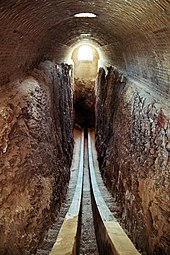Exact sciences

The exact sciences, sometimes called the exact mathematical sciences[1] are those sciences "which admit of absolute precision in their results"; especially the mathematical sciences.[2] Examples of the exact sciences are mathematics, optics, astronomy, and physics, which many philosophers from Descartes, Leibniz, and Kant to the logical positivists took as paradigms of rational and objective knowledge.[3] These sciences have been practiced in many cultures from antiquity[4][5] to modern times.[6][7] Given their ties to mathematics, the exact sciences are characterized by accurate quantitative expression, precise predictions and/or rigorous methods of testing hypotheses involving quantifiable predictions and measurements.
The distinction between the quantitative exact sciences and those sciences which deal with the causes of things is due to Aristotle, who distinguished mathematics from natural philosophy and considered the exact sciences to be the "more natural of the branches of mathematics."[8] Thomas Aquinas employed this distinction when he pointed out that astronomy explains the spherical shape of the Earth by mathematical reasoning while physics explains it by material causes.[9] This distinction was widely, but not universally, accepted until the scientific revolution of the 17th century.[10] Edward Grant has proposed that a fundamental change leading to the new sciences was the unification of the exact sciences and physics by Kepler, Newton, and others, which resulted in a quantitative investigation of the physical causes of natural phenomena.[11]
See also[]
| Wikiquote has quotations related to: Exact science |
- Hard and soft science
- Fundamental science
- Demarcation problem
References[]
- ^ Grant, Edward (2007), A History of Natural Philosophy: From the Ancient World to the Nineteenth Century, Cambridge: Cambridge University Press, p. 43, ISBN 9781139461092
- ^ "Exact, adj.1", Oxford English Dictionary, Online version (2nd ed.), Oxford: Oxford University Press, June 2016
- ^ Friedman, Michael (1992), "Philosophy and the Exact Sciences: Logical Positivism as a Case Study", in Earman, John (ed.), Inference, Explanation, and Other Frustrations: Essays in the Philosophy of Science, Pittsburgh series in philosophy and history of science, 14, Berkeley and Los Angeles: University of California Press, p. 84, ISBN 9780520075771
- ^ Neugebauer, Otto (1962), The Exact Sciences in Antiquity, The Science Library (2nd, reprint ed.), New York: Harper & Bros.
- ^ Sarkar, Benoy Kumar (1918), Hindu Achievements in Exact Science: A Study in the History of Scientific Development, London / New York: Longmans, Green and Company
- ^ Harman, Peter M.; Shapiro, Alan E. (2002), The Investigation of Difficult Things: Essays on Newton and the History of the Exact Sciences in Honour of D. T. Whiteside, Cambridge: Cambridge University Press, ISBN 9780521892667
- ^ Pyenson, Lewis (1993), "Cultural Imperialism and Exact Sciences Revisited", Isis: 103–108, doi:10.1086/356376, JSTOR 235556,
[M]any of the exact sciences… between Claudius Ptolemy and Tycho Brahe were in a common register, whether studied in the diverse parts of the Islamic world, in India, in Christian Europe, in China, or apparently in Mesoamerica.
- ^ Grant, Edward (2007), A History of Natural Philosophy: From the Ancient World to the Nineteenth Century, Cambridge: Cambridge University Press, pp. 42–43, ISBN 9781139461092
- ^ Aquinas, Thomas, Summa Theologica, Part I, Q. 1, Art. 1, Reply 2, retrieved 3 September 2016,
For the astronomer and the physicist both may prove the same conclusion: that the earth, for instance, is round: the astronomer by means of mathematics (i.e. abstracting from matter), but the physicist by means of matter itself.
- ^ Grant, Edward (2007), A History of Natural Philosophy: From the Ancient World to the Nineteenth Century, Cambridge: Cambridge University Press, pp. 303–305, ISBN 9781139461092
- ^ Grant, Edward (2007), A History of Natural Philosophy: From the Ancient World to the Nineteenth Century, Cambridge: Cambridge University Press, pp. 303, 312–313, ISBN 9781139461092
- Formal sciences
- Social science stubs
- Philosophy stubs
- History of science stubs